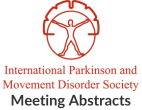Clinical and molecular features of a Chinese family with spinocerebellar ataxia type 6
Objective: To evaluate the clinical manifestation, CAG repeats of abnormal alleles, mitochondrial function and treatment of spinocerebellar ataxia type 6To evaluate the clinical manifestation, CAG…Respiratory Function and Functional Decline in Spinocerebellar Ataxia Type 2
Objective: To evaluate the relationship between the values of Peak Expiratory Flow rate (PEFr), Maximum Inspiratory Pressure (MIP), the presence of respiratory complaints with disease…Prospective study of cognition in SCA2
Objective: Evaluate prospectively cognitive dysfunction in subjects with SCA2 using Mini Mental Examination (MMSE) and Montreal Cognition Assesment (MOCA), looking for correlation between cognitiion and motor…Spinocerebellar ataxias in Southern Brazil: genotypic and phenotypic evaluation of 213 families
Objective: To describe and correlate the genotype and phenotype of patients diagnosed with SCAs. Background: Spinocerebellar Ataxias (SCAs) are neurodegenerative diseases with autosomal dominant inheritance…Need of next generation sequencing technology to de-convolute autosomal recessive cerebellar ataxias in India
Objective: Comparison of two next generation platform to screen ARCA patients in Indian population Background: India is deficient with the molecular screening of the ARCAs.…Spinocerebellar degeneration in Minami-Boso area of Japan – A hospital-based retrospective analysis
Objective: Elucidate the present status of clinical practice for spinocerebellar degeneration (SCD) in Minami-Boso area to plan future direction for managing this intractable condition. Background:…A comparison of relative displacement by double integration with root mean square in the quantitative evaluation of gait ataxia by triaxial accelerometers
Objective: An appropriate biomarker for spinocerebellar degeneration (SCD) is needed. Background: Previously we reported that the average amplitude of medial-lateral of straight gait gained by…The etiologies of chronic progressive cerebellar ataxia in a Korean population
Objective: The etiologies and frequency of cerebellar ataxias vary among countries. Our primary aim was to assess the frequency of each diagnostic group of cerebellar…Influence of disease progression on the quality of life of individuals with spinocerebellar ataxia type 10
Objective: To evaluate quality of life (QoL) of individuals with Spinocerebellar Ataxia Type 10 (SCA10) and investigate whether there is an association between self-perception and…Nucleotide repeats as genetic risk factors in a Swedish Parkinson’s disease cohort
Objective: To search for abnormal NRE in the following genes: ATXN2, ATXN3, CACNA1A, TBP, c9orf72, PRNP, POLG1A and TOMM40 in a Swedish PD cohort. Background:…
- « Previous Page
- 1
- …
- 3
- 4
- 5
- 6
- 7
- 8
- Next Page »
